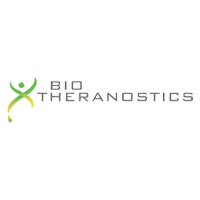Biotheranostics a Hologic Company

- Partner Level
- Gold
- Website
- Visit Site
Overview
Biotheranostics, Inc. represents the oncology portfolio within the Diagnostic Solutions division of Hologic, Inc. The CLIA certified, CAP accredited laboratory provides two proprietary, highly differentiated molecular diagnostic tests for breast and metastatic cancers, Breast Cancer Index (BCI) and CancerTYPE ID, respectively.
Our Products
Breast Cancer Index (BCI)
Breast Cancer Index (BCI) is the only genomic test recognized by multiple guidelines to predict benefit from extended endocrine therapy for women with early-stage, node-negative or node-positive (1-3 nodes), HR+ breast cancer. Historically, the duration of endocrine therapy decisions has primarily been based on clinical and pathologic factors. However, multiple trials have demonstrated that these factors are not indicative of endocrine therapy benefit. BCI is the only test recognized by both ASCO and the NCCN Clinical Practice in Oncology (NCCN Guidelines®) to predict which patients are likely to benefit from extended endocrine therapy.1,2 BCI has demonstrated consistent predictive evidence across 5 studies and over 4,500 patients.3-7 Patients identified by BCI as likely to benefit experienced a 58%-71% relative risk reduction by continuing endocrine therapy for a full 10 years, while patients identified as not likely to benefit did not experience a significant benefit from longer treatment.3-7 The BCI gene-expression assay allows providers to assess early-stage, HR+ patient’s benefit based on their unique tumor biology, helping to avoid potential over and undertreatment of patients.
CancerTYPE ID
CancerTYPE ID provides critical tumor type and subtype information to help resolve diagnostic uncertainty in patients with metastatic cancer. Identifying the tumor type is the fundamental first step towards selecting appropriate treatment. CancerTYPE ID is the most comprehensive and validated test for patients with unknown or unclear diagnoses, distinguishing between 50 different tumor types/subtypes with 87% accuracy.8 In a prospective study, CancerTYPE ID also identified a tumor type in 98% of CUP cases and improved overall survival by 37% with assay-directed treatment compared to empiric therapy for CUP.9 CancerTYPE ID may be paired with a NeoTYPE® Cancer Profile for tumor type and biomarker information to further expand treatment options and improve patient outcomes.*
*NeoTYPE Cancer Profiles are performed and billed separately by our contracted reference laboratory, NeoGenomics Laboratories, Inc.
**For details under the Breast Cancer Index Local Coverage Determination (LCD) click here; For CancerTYPE ID, click here.
Intended Use and Limitations may be found at Biotheranostics.com
Patient Billing and Access
Our tests are available through a variety of payment options. A dedicated Patient Services Team is available to assist your patients throughout the billing process. A Financial Assistance Program and a prompt pay price are also available to those in need. CancerTYPE ID and BCI are covered 100% by Medicare when criteria are met under the Medicare Local Coverage Determinations (LCDs).**
References:
Referenced with permission from the NCCN Clinical Practice Guidelines in Oncology (NCCN Guidelines®) for Breast Cancer V.2.2022. © National Comprehensive Cancer Network, Inc. 2022. All rights reserved. Accessed April 25, 2022. To view the most recent and complete version of the guideline, go online to NCCN.org. NCCN makes no warranties of any kind whatsoever regarding their content, use or application and disclaims any responsibility for their application or use in any way. 2. Andre F et al. J Clin Oncol. Published online April 19, 2022. DOI: 10.1200/JCO.22.00069. 3. Zhang Y, et al. Clin Cancer Res. 2013;19(15):4196-4205. 4. Sgroi DC, et al. J Natl Cancer Inst. 2013;105(14):1036-1042. 5. Bartlett JMS, et al. Clin Cancer Res DOI: 10.1158/1078-0432.CCR-21-3385. 2022. 6. Noordhoek I, et al. Clin Cancer Res. 2021;27(1):311-319. 7. Mamounas EP, et al. 501; ASCO June 2021. 8. Kerr et al. Clin Cancer Res. 2012;18(14):3952-60. 9. Hainsworth et al. J Clin Oncol. 2013;31(2):217-23.

